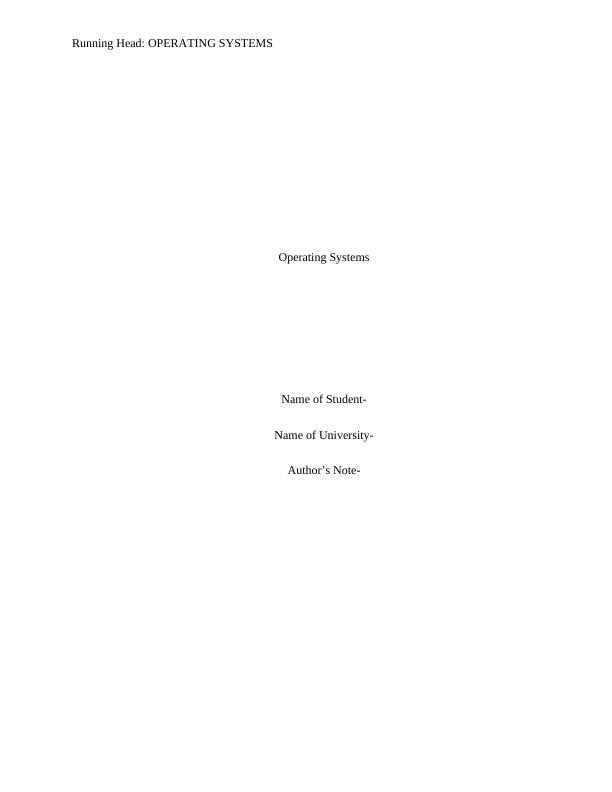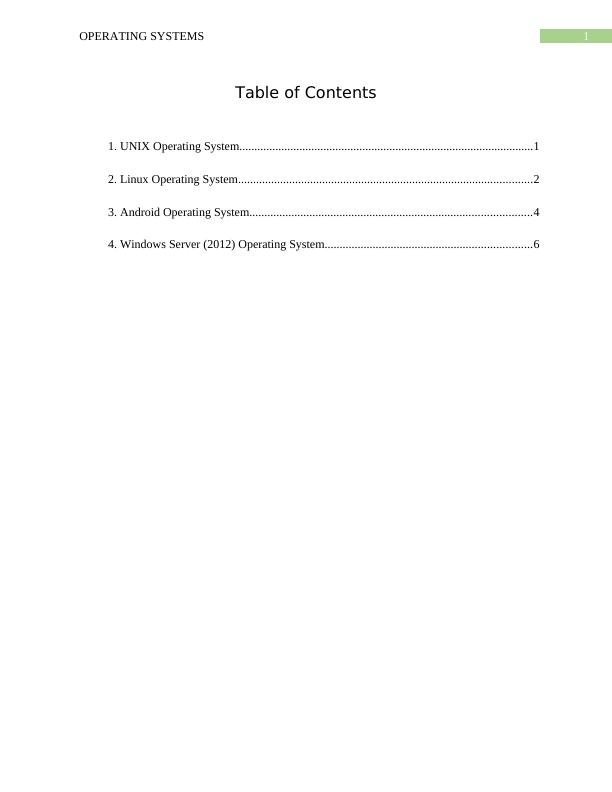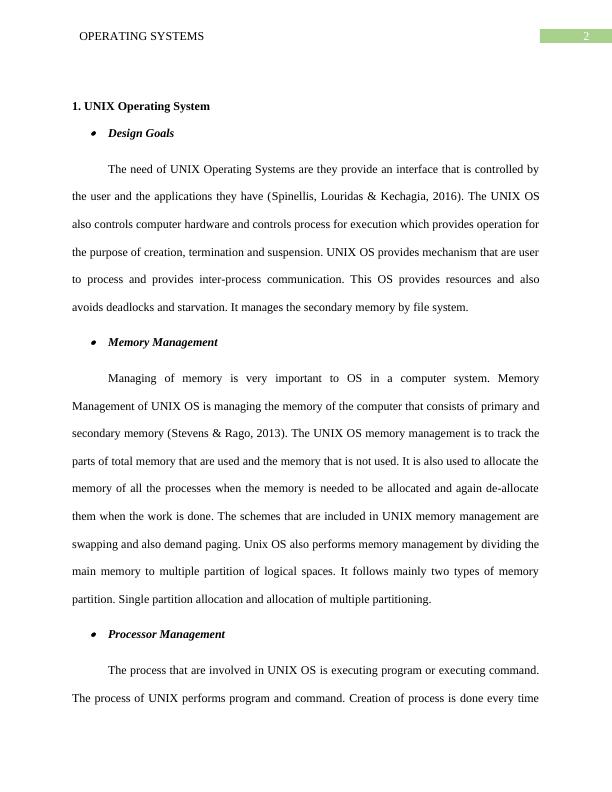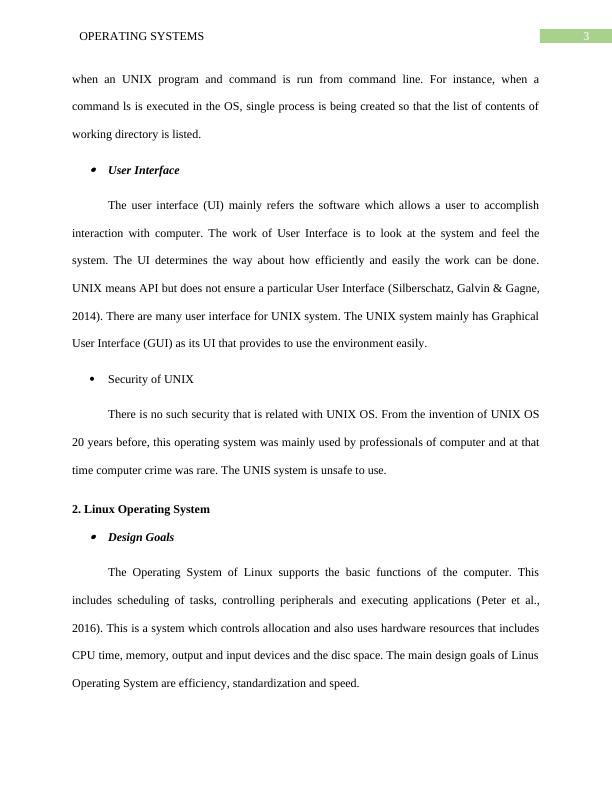Operating Systems: UNIX, Linux, Android, Windows Server (2012)
This research project will cover the four highly commercialized operating systems in the market today. The report will conduct an in-depth investigation of algorithms relating to different operating systems and a study of how different sub managers are implemented. The project will result in the submission of answers to questions provided for each operating system, a written document using MS Word, and a recorded video presentation uploaded on Youtube. The submission will be made through a website created on www.wix.com.
Added on 2023-06-15
About This Document
Operating Systems: UNIX, Linux, Android, Windows Server (2012)
This research project will cover the four highly commercialized operating systems in the market today. The report will conduct an in-depth investigation of algorithms relating to different operating systems and a study of how different sub managers are implemented. The project will result in the submission of answers to questions provided for each operating system, a written document using MS Word, and a recorded video presentation uploaded on Youtube. The submission will be made through a website created on www.wix.com.
Added on 2023-06-15
End of preview
Want to access all the pages? Upload your documents or become a member.




